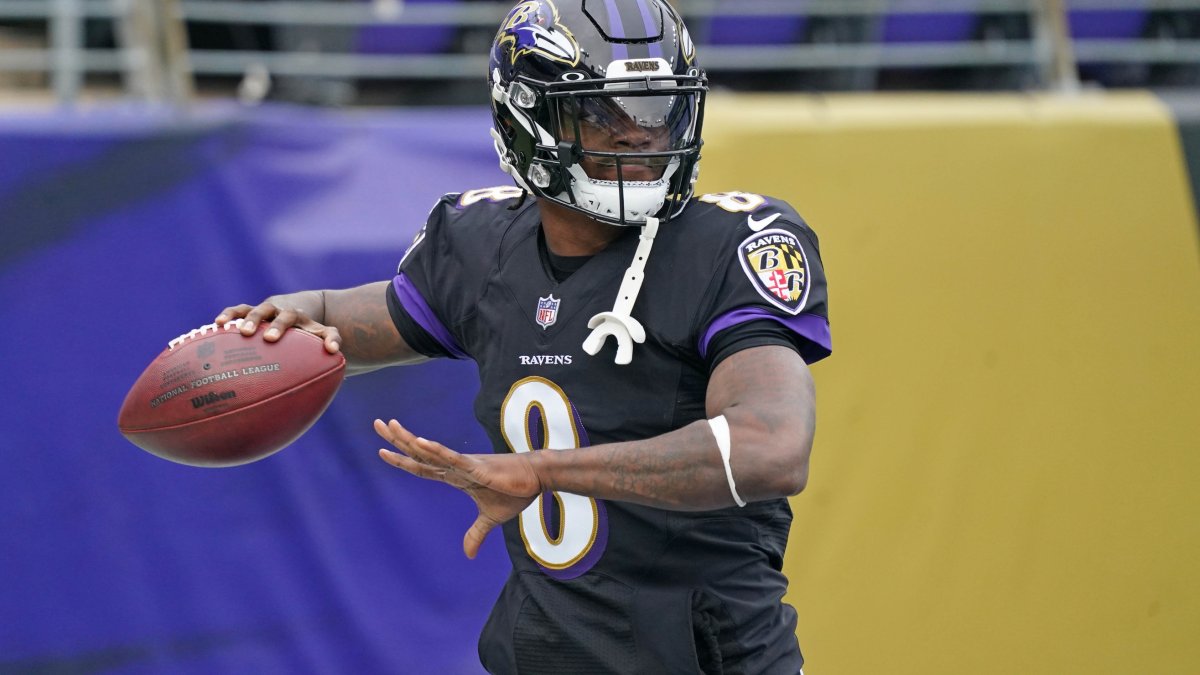One season removed from a 14-2 record, a dominant defensive performance and an explosion by 2019 MVP Lamar Jackson, it wouldn’t offend anyone’s better logic to chalk up the Baltimore Ravens‘ 2020 season as regression to the mean.
This would make the mistake of assuming that conversations about Jackson’s performance appeal to the better logic of the pundits and fans who still debate his viability as a passer, even after three consecutive trips to the postseason.
After dismissing that narrative outright throughout the season, it would be negligent not to note how much difficulty the Ravens had moving the ball through the air against the best competition on their schedule, which culminated in the paltry performance in Buffalo where the Ravens nearly averaged as many yards per sack as they did per completion.
By season’s end, what was once the NFL’s second-best passing offense in expected points added (EPA) per play had fallen to a perfectly average 16th, and the 96.1 passer rating that propelled Jackson to win MVP dipped to 85.4, from eighth to 20th.
Some analysts — myself included — openly wondered whether Baltimore’s offensive coordinator was losing his grip on the offense. I want to be fair here, so it's time to perform an autopsy on the Ravens’ 2020 passing offense to see what changed between this season and last and see what can be addressed before kickoff next fall.
Ravens passing offense by personnel: 2019 and 2020
| Personnel | 2019 | 2020 |
| 11 Personnel | 46.9% (29th) | 60.6% (27th) |
| 12 Personnel | 26.8% (5th) | 11.3% (24th) |
| 21 Personnel | 6.2% (14th) | 12.8% (5th) |
| Empty sets | 24.4% (1st) | 23.3% (4th) |
The first comparison comes at a structural level, in the personnel groupings the Ravens most often used over the last two seasons.
Baltimore played more out of 11 personnel (one running back, one tight end) in 2020, but both years were well below league average, ranking 29th and 27th in 2019 and 2020, respectively.
There was some deceptive divergence between the kinds of “base” personnel used — think two tight ends or two backs with two receivers — with Baltimore opting for more two-back looks instead of trotting out two tight ends. Roman’s use of 12 personnel in 2019 ranked fifth in the NFL, and his use of 21 personnel ranked fifth in 2020. There’s a noticeable, explanatory change behind this: Hayden Hurst's departure in exchange for draft capital made versatile fullback Patrick Ricard a natural replacement. Because of Ricard’s athletic ability, this is the same kind of offensive look.
Lastly, Baltimore’s use of empty formations ranked in the top five in the last two seasons — first and fourth, respectively. For a team that rarely seeks to spread a defense out with talented perimeter players, this is significant enough to come back to a little later.
Exclusive content for premium subscribers

WANT TO KEEP READING?
Dominate Fantasy Football & Betting with AI-Powered Data & Tools Trusted By All 32 Teams
Already have a subscription? Log in




 © 2025 PFF - all rights reserved.
© 2025 PFF - all rights reserved.